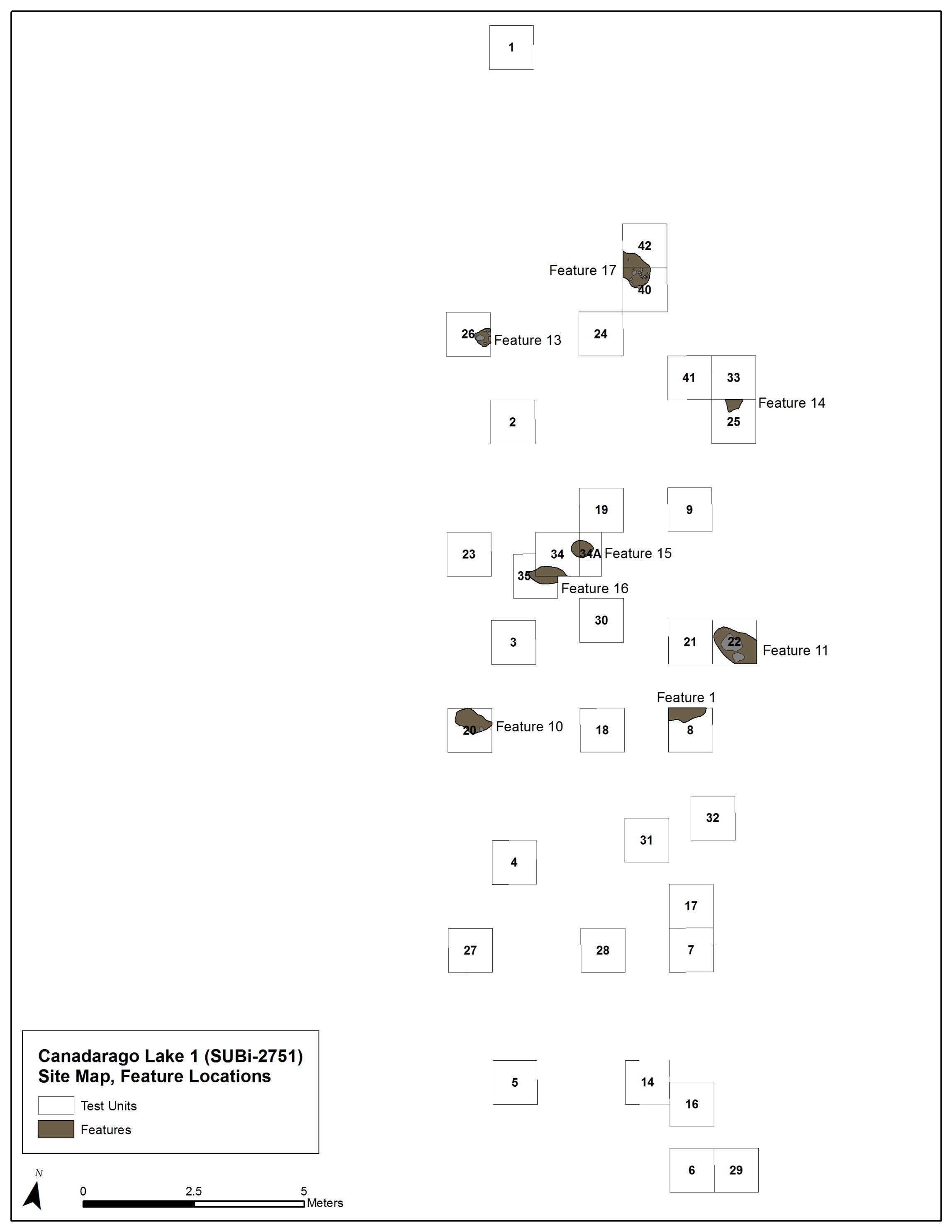Another key component of the Canadarago Lake I data recovery investigations was to explore how precontact groups used the upland landscape surrounding Canadarago Lake. Central to this exploration was reconstructing feature technologies associated with the temporally distinct occupations of the site. Specifically, how did the types of cultural features and the investment of labor in feature construction change over time and how do these reflect and/or shape the site’s role in past cultural landscapes? The Canadarago Lake I feature assemblage included only a few distinct feature types: 6 hearths (or cooking features) and 2 small storage pits. Individual features and stratigraphic horizons were assigned a temporal affiliation based on diagnostic material culture and radiometric dates. Only one feature associated with the Late Archaic component was identified at the site. The hearth feature indicates the need for heat, possibly for food processing and/or light. The presence of only one small hearth suggests a short-term period of site use. As with the Late Archaic component, only one feature was associated with the Early Woodland period of site use. Also like the Late Archaic, the feature was a hearth. The same interpretation applies to this component: the hearth indicates the need for heat and/or light and the presence of only one small hearth suggests short-term site use. More features and more feature types are associated with the Late Woodland component. Both thermal and non-thermal features were identified. These include four hearths and two small, basin-shaped pits. This indicates that site occupants during this time were engaged in more site activities and possibly for more or longer periods of time.

Canadarago Lake I site with feature locations.